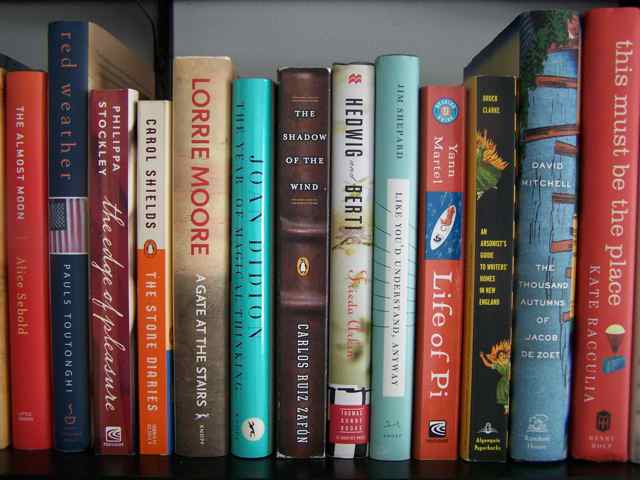 Joanna Trollope became one of my favorite authors years ago when I first read The Best of Friends or maybe The Men and the Girls (since that was the first of her novels to be published in the U.S.) and then proceeded to read every Joanna Trollope novel I could get my hands on. (She also wrote historical novels under the name Caroline Harvey.) She wrote about young marrieds, or siblings, or May-December couples, or illicit romances with a kind of touched-up realism, showing readers the characters’ faults but never crossing the line into utter ugliness. And the British characters were so smart (in both the English and American senses of the word)! But starting with Friday Nights (2007) and The Other Family (2010) and now with Daughters-in-Law (2011), her characters’ faults came to seem mostly minor and forgivable and their problems too easily resolved by love or money…preferably both. (Yes, I’ve gotten older, but so has the author. Have her books gotten lighter, the more popular they became?)
Joanna Trollope became one of my favorite authors years ago when I first read The Best of Friends or maybe The Men and the Girls (since that was the first of her novels to be published in the U.S.) and then proceeded to read every Joanna Trollope novel I could get my hands on. (She also wrote historical novels under the name Caroline Harvey.) She wrote about young marrieds, or siblings, or May-December couples, or illicit romances with a kind of touched-up realism, showing readers the characters’ faults but never crossing the line into utter ugliness. And the British characters were so smart (in both the English and American senses of the word)! But starting with Friday Nights (2007) and The Other Family (2010) and now with Daughters-in-Law (2011), her characters’ faults came to seem mostly minor and forgivable and their problems too easily resolved by love or money…preferably both. (Yes, I’ve gotten older, but so has the author. Have her books gotten lighter, the more popular they became?)
It turns out that Joanna Trollope is known in England as the “Queen of the Aga Saga“, an offhand but catchy tag from a male literary critic that stuck, relegating her novels of middle-class English country life to a subset of fiction known as the “family saga“. Usually referring to long or multi-volume novels covering multiple generations, such as The Forsyte Saga, by John Galsworthy or The Cazalet Chronicles by Elizabeth Jane Howard, the best family sagas eventually get made into public television miniseries, sometimes more than once. (Hey, BBC, what about Penny Vincenzi’s Lytton Family trilogy?)
A few years ago, Joanna Trollope and another popular English female author beat Jodi Picoult and Jennifer Weiner to the punch in wondering why their best-selling domestic dramas weren’t ever even shortlisted for prestigious literary prizes — cleverly labeling the usual prize-winners “grim-lit”. This caused the literary critic who coined the phrase “Aga saga” to wonder why the bestselling novelists couldn’t be happy with the big royalty checks from their books when most literary fiction is quickly consigned to the remainder tables unless it wins recognition from a prize committee.
In Daughters-in-Law, the author examines a mother’s relationship with her three adult sons and their wives, as well as the dynamics of marriages with children. She details the crises of everyday life and the moments when choices between conflicting loyalties must be made. There were moments, reading Daughters-in-Law, when I thought the book might break out of its genre conventions and have the characters not all neatly work out their issues and messy entanglements by page 319, but if it had, the untidy ending probably would have upset more readers than it pleased.
I would recommend this one to women’s book clubs because there are plenty of characters and their motivations to discuss. A reading group guide is included in the softcover edition.
Click here for a funny riff on the family saga and chick-lit labels from a male columnist for The Independent.
Other opinions about Daughters-in-Law (mostly good):
5MinutesforBooks.com
The Hungry Bookshelf
I Prefer Reading
Pickle Me This
